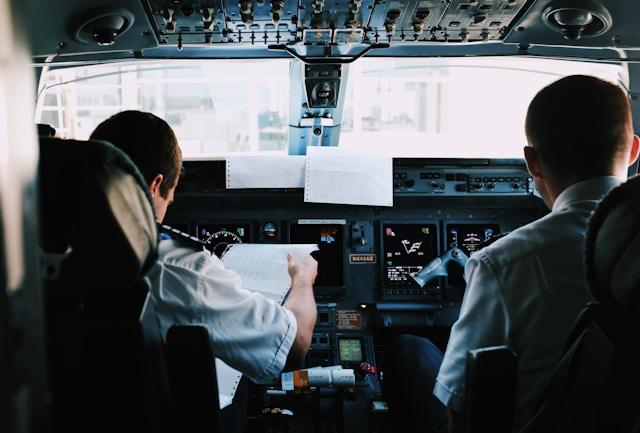Flying a private aircraft requires thorough preparation and attention to detail to ensure a safe and enjoyable experience. From planning the flight route to conducting pre-flight checks, each step plays a crucial role in preparing for a successful journey. This article outlines five essential preparations that pilots should undertake before flying their private aircraft, emphasizing the importance of meticulous planning, safety protocols, and operational readiness.
1. Flight Planning and Navigation
Flight planning and navigation are indispensable facets of preparing for private aircraft operations, ensuring not only safety but also efficiency in every journey. Pilots engage in meticulous planning, analyzing weather patterns, airspace regulations, and fuel requirements to optimize flight routes. Utilizing advanced GPS systems, charts, and onboard instruments, they maintain precise navigation and situational awareness throughout the flight. Additionally, thorough pre-flight checks of airport details, such as runway specifications and available services, along with monitoring relevant notices to airmen (NOTAMs), further contribute to a seamless flight experience. By prioritizing comprehensive flight planning and navigation strategies, pilots effectively mitigate risks and enhance the overall success and safety of their private aircraft operations.
2. Aircraft Inspection and Maintenance Checks
Conducting comprehensive aircraft inspection and maintenance checks is essential to verify the airworthiness of the aircraft before flight. Pilots follow a structured checklist provided by the aircraft manufacturer or regulatory authority, covering exterior and interior inspections, engine checks, control surfaces, and avionics systems. Inspections include verifying fuel quantity, checking tire condition and pressure, testing lights, and ensuring emergency equipment is functional. Pilots must address any discrepancies or maintenance issues identified during the inspection to ensure the aircraft is in optimal condition for flight. Regular maintenance and thorough inspections contribute to safe operations and mitigate the risk of mechanical failures during flight.
3. Weight and Balance Calculation
Calculating weight and balance is critical to ensure the aircraft’s center of gravity falls within acceptable limits for safe flight. Pilots calculate the total weight of passengers, cargo, fuel, and other items on board using accurate measurements and load distribution data. This calculation helps in determining the aircraft’s stability and performance characteristics during takeoff, flight, and landing. Pilots must ensure that the weight and balance calculation complies with aircraft limitations and regulatory requirements. Adjustments can be necessary to redistribute weight or reduce payload to maintain proper balance. Proper weight and balance management contribute to safe flight operations and optimal aircraft performance.
4. Fuel Management and Planning
Effective fuel management involves calculating the required fuel quantity based on factors such as flight distance, planned route, weather conditions, and alternate airport requirements. Pilots consider fuel reserves for unexpected delays or diversions to ensure an adequate supply throughout the flight. Calculations account for fuel consumption rates, taxiing, and engine performance at different altitudes. Pilots choose the most efficient fueling strategy based on available options at departure and destination airports. Monitoring fuel levels and consumption during flight ensures pilots can make informed decisions to maintain sufficient reserves and manage fuel efficiently. Proper fuel planning enhances flight safety, extends operational range, and supports regulatory compliance.
5. Having a Reliable Aircraft Tug
Ensuring you have a reliable aircraft tug is crucial for the smooth operation of your private aircraft. A quality aircraft tug for sale can greatly simplify the task of maneuvering your plane on the ground, whether it’s in hangars or on the tarmac. Before flying, it’s essential to inspect the aircraft tug thoroughly to ensure it’s in optimal condition, with well-maintained tires and a powerful engine. This preparation ensures that you can safely and efficiently move your aircraft without any unexpected delays or issues. By investing in a dependable aircraft tug, pilots can enhance their operational efficiency and focus more on the critical aspects of flight planning and execution.
Conclusion
In conclusion, preparing to fly your private aircraft involves several essential steps that contribute to a safe and efficient flight experience. By prioritizing flight planning and navigation, conducting thorough aircraft inspections and maintenance checks, calculating weight and balance, managing fuel effectively, and having a reliable aircraft tug, pilots can enhance safety, operational readiness, and overall flight performance. Each preparation step plays a crucial role in mitigating risks and optimizing the flying experience. By adhering to these guidelines, pilots can confidently navigate the skies and enjoy the freedom and adventure of flying their private aircraft while ensuring safety remains the top priority.





























